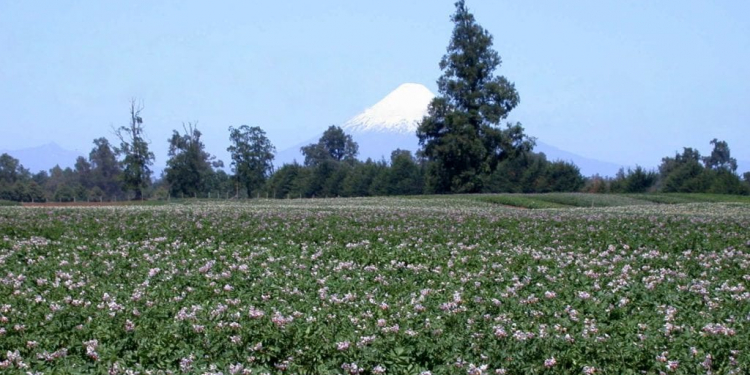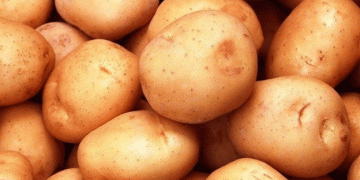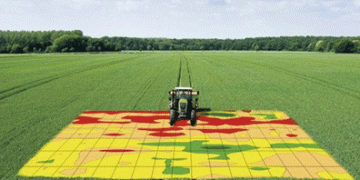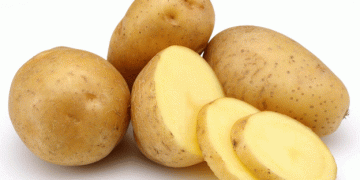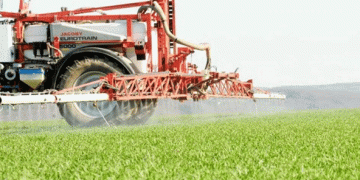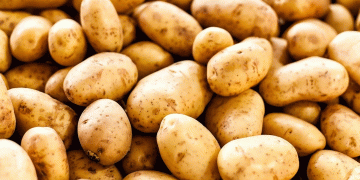It is common to think that food crops are going to suffer negative effects due to the increase in global temperatures or the water deficit generated by climate change, however, the potential effects depend a lot on the environmental conditions of each agro-ecological zone, on the climatic requirements of the species and cultivated varieties.
The potato is a spring-summer crop that has high thermal requirements for the emergence phase, tuberization and temperature filling, ranging from 14 ° C to 25 ° C. Since its cultivation in tropical or subtropical areas generally exceeds these thermal requirements, a 1 or 2 ° C increase above the current average ambient temperature due to global warming is expected to have negative effects on yield. Similar effects are to be expected in regions with Mediterranean climates such as central Chile, where maximum temperatures in summer have been increasing along with less availability of water for irrigation as a result of the drought. In this context, it is impossible to think about growing potatoes without irrigation in these regions.
Currently in the southern part of the country, where the national potato production is concentrated, the crop grows under average temperatures close to 14 ° C, a suboptimal magnitude for various stages of its development. Despite the fact that during some days of the cycle supra optimal temperatures are reached for a few hours a day, the plant would not experience permanent damage to its physiological performance.
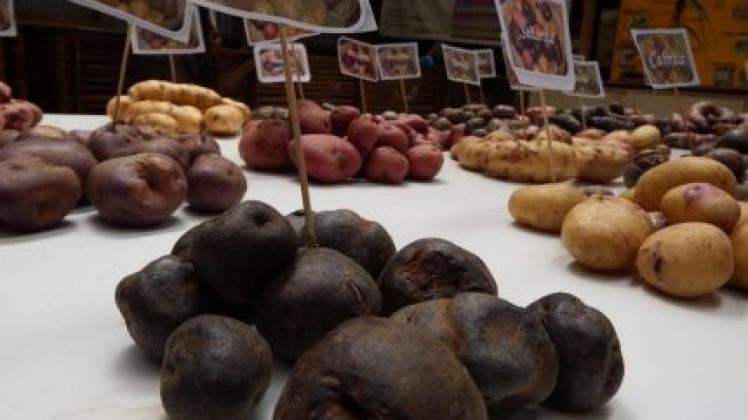
Field studies carried out at the Universidad Austral de Chile, by the researchers who subscribe this article, have shown that, depending on the duration and timing of the temperature increase during the growing cycle, potatoes would respond positively to the expected increase in temperature. due to the effect of climate change for the southern zone of Chile.
Higher temperatures (+3 to + 7 ° C) for a short period (20 days) at the beginning of the filling of the tubers stimulate photosynthesis, the duration of the green leaf area and therefore prolong the filling of the tubers generating an increase in average yield of 30%, in both native (Chona Negra) and commercial varieties (Karú INIA and Desiree). The researchers showed that the advantage gained under a short heating period,
These experimental results allow us to infer that the thermal conditions of the southern zone of Chile will continue to be favorable for the development of potatoes, even under climate change scenarios. In this context, advancing planting dates, a suggested adaptation measure for other crops, would not necessarily be favorable for potato cultivation, because it would expose it to sub-optimal temperatures. The use of tolerant varieties or that respond positively to temperature increases, on the other hand, appears as an adaptation strategy that can bring benefits to producers and for which it is necessary to continue the evaluation in different genotypes.
Despite the positive results of these studies, we must not fail to consider that an increase in the frequency of extreme temperature events is expected. In fact, in recent decades there has been an increase in the total hours that the crop is exposed to very high temperatures (> 32 ° C), which can lead to irreversible physiological damage to crops. In Valdivia, for example, the number of hours of exposure to very high temperatures has increased from 15, in the 90’s, to more than 80 hours in the present decade, increasing the stress time of the plants.
Another climate factor that cannot be ignored when it comes to temperature effects on crops is the availability of water. Perspiration is the main mechanism of thermal regulation of the leaves and, on the other hand, increases in temperature will increase the evaporative demand of the environment, therefore the water requirements could increase. In potatoes, the differences in yield between an irrigated crop and one in dry land can reach 60%, mainly due to a reduction in the size of the tubers.
Currently 70% of the potato area in the south-central zone is produced under rainfed conditions with yields below the potential that could be achieved with an availability of approximately 500 mm in the season. Considering the above, a reduction in rainfall in spring summer, as projected as a result of climate change, will affect the yields of the southern zone of Chile, if the implementation of irrigation is not foreseen according to the requirements of each territory.
An important aspect to highlight from this research is that the increase in temperature in environmental conditions in southern Chile, in dry land produced a more severe effect than under irrigation. On the contrary, moderately high temperatures combined with irrigation would benefit the performance of the crop, with respect to the current condition, in commercial varieties and surprisingly in a higher proportion in the native varieties evaluated. The results provide clear evidence that native Chiloé potatoes show a contrasting behavior with commercial varieties, which would mean an advantage for future climatic conditions.
